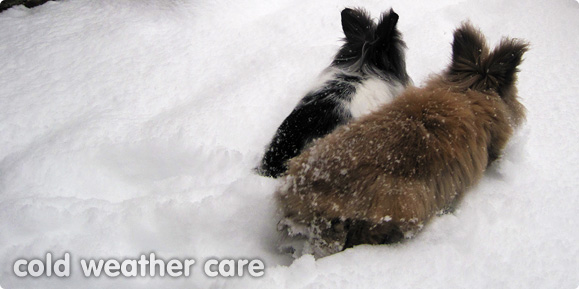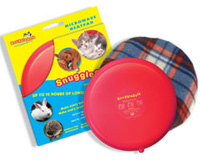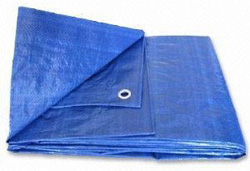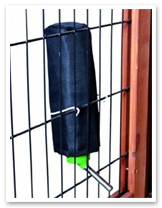Caring for your rabbits in cold weather

Rabbits do not tolerate extreme weather temperatures so you need to make sure their housing stays warm and comfortable and protects them from the elements. Rabbits do not hiberate, so if your rabbit looks limp or sleepy and isn't really reacting to anything then you need to get him to a vet ASAP. If you have just got a rabbit and he's been kept indoors or is a baby, don't put him outside until the weather gets warmer, as the sharp change in weather can kill.
 Indoor house rabbits should be fine in the cold weather as the temperature indoors tends to be regulated for yourselves! But check that their living area is not in a draught, and if temperatures drop very low during the night you could give them a Snugglesafe Heatpad (it's like a pet-safe hot water bottle) for some warmth.
Indoor house rabbits should be fine in the cold weather as the temperature indoors tends to be regulated for yourselves! But check that their living area is not in a draught, and if temperatures drop very low during the night you could give them a Snugglesafe Heatpad (it's like a pet-safe hot water bottle) for some warmth.
Changes in your rabbit's body during winter months
Rabbits will eat more in winter as they naturally think food will become scarce. The extra food also provides them with more fat insulation, but this alone does not keep them warm enough. Their fur coat will also get a bit thicker, but again this only helps them slightly and they'll still rely solely on you to keep them safe and warm! Remember rabbits in the wild live underground in dry, draught-free burrows, snuggled up with warm groups of other bunnies!
Move the hutch somewhere warmer
If possible, bring your rabbits indoors for the winter, or move their hutch to an unused garage or shed. Do not put the hutch in the garage if you park your cars in there as the exhaust fumes are dangerous to them. If you have no shed or garage, move the hutch to somewhere sheltered such as by some trees, facing away from the wind.
Look for gaps in the hutch walls
Check there are no gaps through which rain and wind can get in. Make sure the wood isn't damp or rotting, and reapply a rabbit-safe wood protecting coating every few years. You can also line the inside walls with newspaper.
 Check the roof
Check the roof
Recover the hutch roof every few years if needs be, and cover with a plastic sheet or tarpaulin to stop the rain from getting in. Put sheets of newspaper and a warm blanket between the roof and plastic sheet for added insulation, and let it hang down the sides and back as well as it covering the roof.
Make the inside of the rabbit hutch warm
- Line the floor with layers of newspaper and add lots of extra hay and straw for your rabbits to bury themselves into.
- Blankets and fleeces are also useful for them to snuggle into or to line the floor with
- Buy some cheap carpet samples for them to sit on (make sure the edges aren't fraying)
- Get a cardboard box, close all 4 sides and cut a hole big enough for your rabbits to get through, and fill the box with hay. This will give them somewhere a bit more insulated to sit. If you have 2 rabbits make sure the box fits 2 rabbits in at once. Make sure they still have enough room in the rest of the hutch to stretch out.
- Buy them a 'Snugglesafe Heatpad'. You warm it up in the microwave and it releases heat for a few hours, so you'll need to reheat it a couple of times a day.
 Partially cover the front of the hutch / mesh
Partially cover the front of the hutch / mesh
You can use clear perspex or a plastic sheet over a large portion of the front of the hutch so your rabbits can still see out and the light will come in, but wind and rain can't blow in. Be sure to leave enough room for fresh air to come in so your bunnies can still breathe!
You can also buy waterproof hutch covers.
You MUST have a bedroom section in your hutch!
Raise the hutch off the floor
Raise your hutch by placing bricks underneath, or by attaching long legs. This will help to prevent damp from the ground affecting the bottom of the hutch, and also stop ground frost freezing the base. It will also protect a hutch in an area that is likely to flood a little (obviously won't protect from severe flooding). Ideally rabbit hutches should be on long legs all the time to make it hard for predators to get near.
 Water
Water
Check a few times a day that your rabbits' water bottle or dish of water hasn't frozen over. You can buy bottle covers that help to prevent this, or a thick sock over the bottle can also help, but still check the water and the spout have not frozen.
Toilet area
It's very important to keep this area clean as their urine can freeze and be very uncomfortable for them if left there. Bedding needs to be kept clean and dry and checked daily. Sitting on wet bedding can make them ill.
Keep your rabbits in pairs
Rabbits can get very lonely on their own, so by keeping them in pairs not only will they have a friend, they will also snuggle together to share body warmth.
Exercise
Rabbits still need exercise in winter so bring them indoors for a run around, or let them have a short time in the garden but make sure they don't get wet. If your rabbits get very wet, dry them with a towel and let them warm up naturally indoors (do not put them by a heater which they can't move away from). Do as much insulating of their run as possible so they can still go in it, and try and move it somewhere where it will get some winter sunshine.
Outdoor bunnies rely on their owners to keep them safe in all kinds of weather. They are silent creatures and can't bark or ask you for help so please keep a close eye on your rabbits. Any changes or anything you may be worried about, phone your vet.
